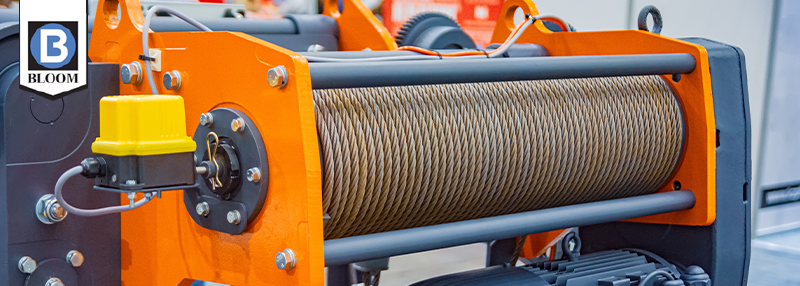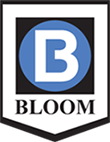
When you’re on the job site and are faced with a heavy-duty lifting or pulling task, choosing the right winch for the job is critical. It doesn’t matter what industry you’re in, whether it’s construction, marine, oil and gas, or utilities, choosing the right – or wrong – winch can make all the difference between a job well done and a disaster.
Here at Bloom Manufacturing, we specialize in designing and manufacturing custom hydraulic winches that are built to perform under even the most demanding conditions. Not sure what to look for when choosing a winch? We’ve put together this buyer’s guide to walk you through the key features, technical specifications, and industry applications of our options.
Common Uses for Heavy-Duty Winches
Before we dive into the nitty-gritty of what you should look for in a winch, let’s discuss some of the industries for which this guide will be applicable, and the situations where you may need a heavy-duty winch in those industries. Heavy-duty winches can be used across a wide range of industries and applications, including:
- Construction for lifting and positioning heavy materials and equipment
- Marine for handling anchors, mooring, and towing operations
- Oil and Gas, for rigging, pipeline pulling, and offshore platform operations
- Utilities for handling cable tensioning, pole setting, and lifting transformers
- Forestry for skidding logs and taking care of equipment retrieval in harsh terrains
- Mining for hauling ore carts and for equipment recovery and shaft operations
Key Features to Look for in a Heavy-Duty Winch
1. Load Capacity
The first and most important factor is the “rated line pull”, or the maximum load your winch can handle. For industrial applications, this typically ranges from 5,000 lbs. to over 100,000 lbs. Always choose a winch with a capacity that exceeds your maximum expected load to ensure safety and durability.
2. Hydraulic vs. Electric Winches
Hydraulic winches are ideal for continuous, high-load operations. They offer superior torque, are less prone to overheating, and are more durable in harsh environments.
Electric winches are easier to install and maintain, but are typically better suited for lighter-duty or intermittent use. At Bloom Manufacturing, we specialize in custom hydraulic winches engineered for long-term performance.
Related: Are Hydraulic Winches Stronger than Electric?
3. Line Speed and Gear Ratio
Line speed affects how quickly your winch pulls in the cable. A lower gear ratio provides more pulling power but slower speed, while a higher ratio offers faster retrieval with less torque. Consider your operational needs: do you need speed, power, or a balance of both?
4. Drum Size and Cable Length
How much cable a winch can hold is determined by the drum diameter and width. Applications requiring long-distance pulls or deep lifts will need a larger drum and longer cable.
5. Braking System
A reliable automatic brake system is essential for load control and safety. Look for winches with spring-applied, hydraulically released brakes for secure load holding.
6. Mounting and Configuration Options
Heavy-duty winches can be base-mounted, side-mounted, or custom-configured to fit your equipment. Bloom Manufacturing offers custom mounting solutions to integrate seamlessly with your machinery.
Find the Right Winch for Your Project Today
Remember, choosing the right winch isn’t just about the specs; it’s about finding a solution that fits your unique set of operational needs. Here at Bloom Manufacturing, we work with you to design and deliver a winch that works just as hard as you do!
Whether you’re looking for a planetary winch, a worm-gear winch, or a custom-built hydraulic winch, Bloom Manufacturing has been delivering performance you can trust for more than a century. Contact us today to put that history and knowledge to use for your business.
Bloom Manufacturing Construction Forestry Industrial Winches Marine Offshore Drilling Winch
August 1, 2025 by Bloom Manufacturing



